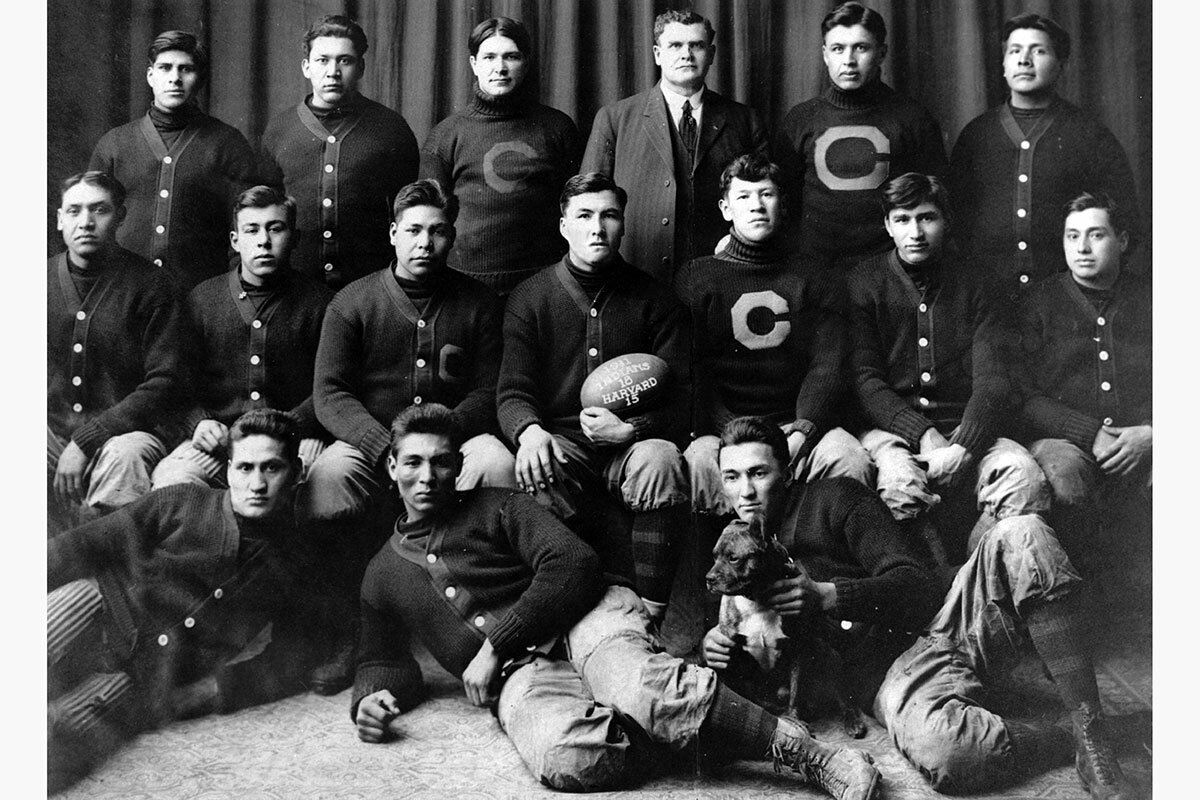Jim Thorpe ran track and played football. He tried to outrun racism.
Loading...
Jim Thorpe, a Native American, excelled at nearly every sport he took on, becoming one of the most gifted athletes of all time. His legendary status tipped over into mythology, partly abetted by Thorpe himself, and partly created by the media of his day, which also dealt in racist stereotypes about the prowess of Indigenous peoples.
Separating the truth of Thorpe’s life from the many fictions is a task for only the most skilled of biographers. David Maraniss, associate editor at The Washington Post, winner of the 1993 Pulitzer Prize for national reporting, and author of 12 previous books, including “When Pride Still Mattered,” a biography of famed football coach Vince Lombardi, takes on that challenge. He aims to set the record straight in “Path Lit by Lightning: The Life of Jim Thorpe.”
James Francis Thorpe was born in 1887, in what is now Oklahoma, of Sac and Fox lineage. He was given a second name: Wa-tho-Huk. One translation of the name, the author writes, is “Path Lit by Lightning,” which doubles as a powerful title for the book. Thorpe’s early life was defined by tragedy, losing his beloved twin brother and his mother in his formative years.
As a teenager, he was sent to the Carlisle Indian Industrial School in Pennsylvania. The school, like others run by the government, made no secret of its mission: exterminating the Native identities of young people so they would be forced to assimilate. “Everything [was done] with one purpose – to refashion young [Native Americans] in the image of white people,” Maraniss writes.
Despite the school’s odious intentions and an atmosphere that could feel prisonlike, Thorpe’s years at Carlisle were some of his happiest, according to Maraniss. It was there he found a sense of community and where his raw athletic talent was first recognized: “His teammates could sense he was different,” Maraniss writes. “They had seen ... the rare combination of strength, speed, stubbornness, instinct, and agile grace, the hint of danger and spark of electricity.”
The Carlisle football team, largely thanks to Thorpe’s contributions, dominated in game after game against some of the country’s finest college teams, and he shone as an individual in track and field, winning him a spot in the 1912 Summer Olympics in Stockholm, where he blew away the competition.
He won gold in the Olympic pentathlon and decathlon, but he was later stripped of the medals after it came to light that he had once played semiprofessional baseball – which meant he was not an amateur as the Olympic rules demanded.
The question of restoring his medals was continually raised during his lifetime and following his 1953 death, until a concession was granted by the International Olympic Committee in the 1980s, when it named him a co-winner of his two events. Maraniss’ book arrives just in time to see the IOC acknowledge Thorpe as the sole winner of the two titles.
The Olympic scandal marked the beginning of a hard road for Thorpe, a path more littered with hardship than lit by lightning. Despite playing baseball and football professionally, and serving briefly as president of what would become the National Football League, he was never financially secure. He was not able to settle down in one place or in one career.
Perhaps because of the trauma of his early life and the treatment he received at government schools, he struggled to be a consistent father and husband and had periods of addiction to alcohol.
Maraniss not only succeeds in revealing the man behind the fable, but also exposes the shameful treatment that Native Americans endured, as the government sought to take their land and erase their culture.
In telling the story of an athlete who frankly deserved better, the author demonstrates both Thorpe’s persistence and courage, and the discriminatory policies that tried to keep him down.







